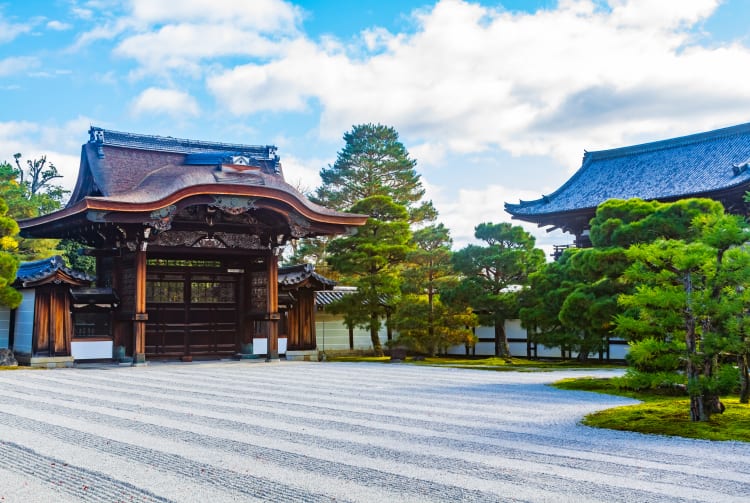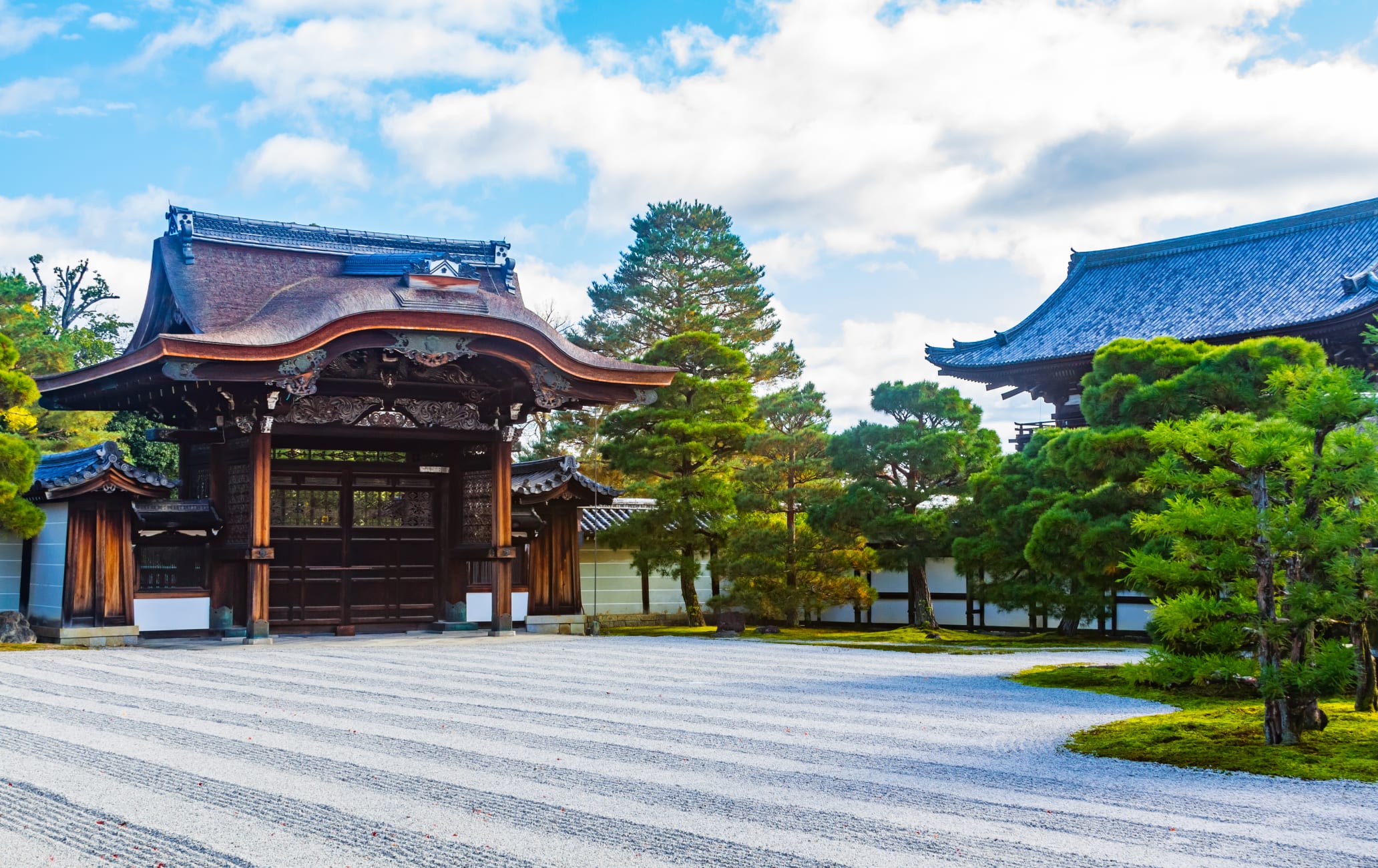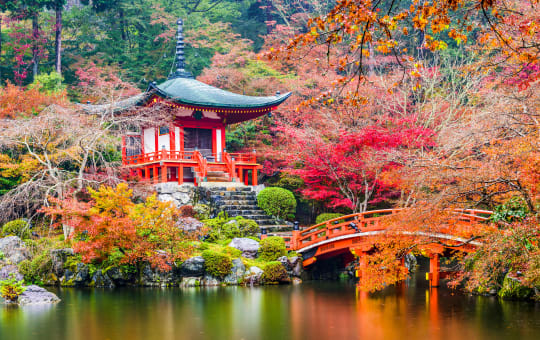A quiet and tasteful temple that offers many surprises
Ninna-ji Temple was built in 888 CE, and is a World Heritage Site. It is where Emperor Uda was born, and later where he lived as the first chief priest of the temple. Ninna-ji is known as a monzeki temple. Monzeki refers to Buddhist priests of aristocratic or imperial lineage and those who served the imperial family, and the temples in which they lived. The temple is the head temple of the Omuro school of Shingon Buddhism.
Don't Miss
- The Omuro sakura cherry blossoms, the latest blooming cherry blossoms in Kyoto
- The Joju-san Omuro 88 sacred sites on the mountain grounds behind the temple, a miniature version of the Shikoku 88 Pilgrimage
Quick Facts
Most of the head priests were from the imperial family, and the head priest's residence was called the palace (Omuro)
The Omuro today refers to the Shinden, Kuroshoin, and the Shiroshoin
How to Get There
Ninna-ji Temple is accessible by train.
Ninna-ji is a few minutes' walk from Omuro Ninnaji Station on the Keifuku Kitano Line. The temple is a 10-minute walk west of Ryoanji Temple.
A turbulent history
Ninna-ji's temple buildings were burnt down in 1468 during the Onin War, but were rebuilt in the early 17th century with the assistance of the Tokugawa Shogunate. Several buildings were relocated to Ninna-ji from the Imperial Palace, which was also being reconstructed at the time. The temple's reconstruction was completed in 1646.
The buildings at Ninna-ji include the Kondo, a National Treasure, and the Miedo, an Important Cultural Property. Other Important Cultural Properties include the Niomon (a gate with Buddhist statues on either side) and a five-story pagoda.
A wide variety of cultural products
The Reihokan Museum houses many cultural properties, including sculptures, paintings, and ancient documents. The principal image from the time of the temple's founding, an Amitabha triad, is also housed in the Reihokan. The Amitabha Buddha and two attendent bodhisattva are the center of worship at Ninnaji Temple.
* The information on this page may be subject to change due to COVID-19.


































































